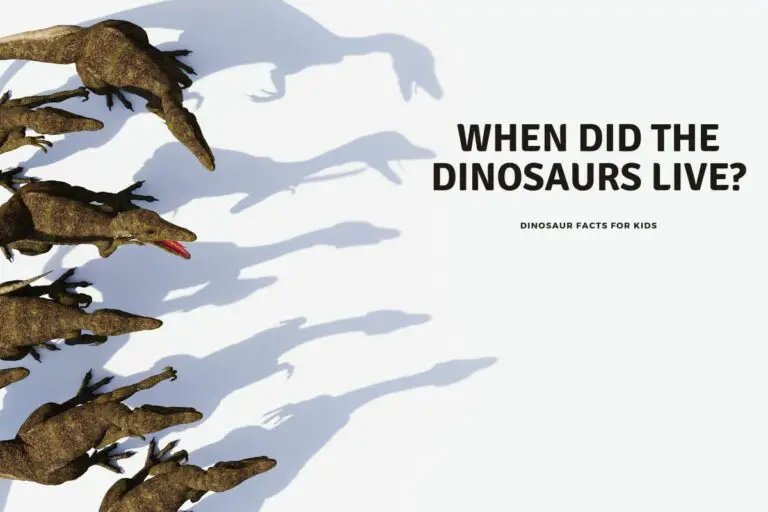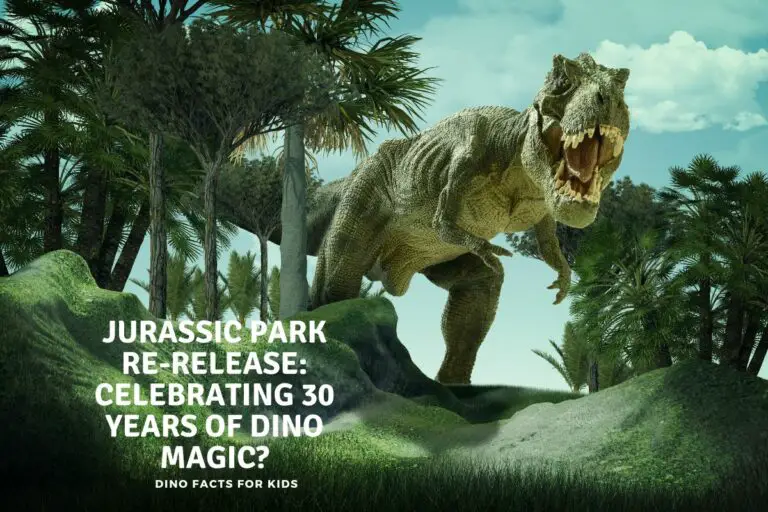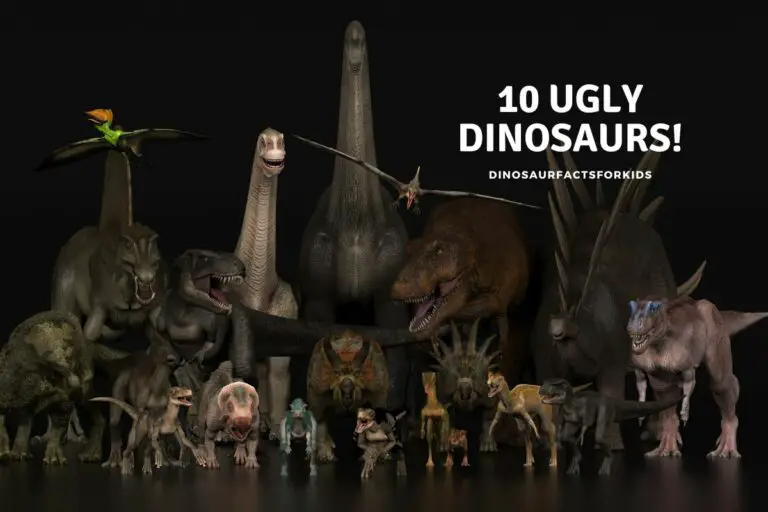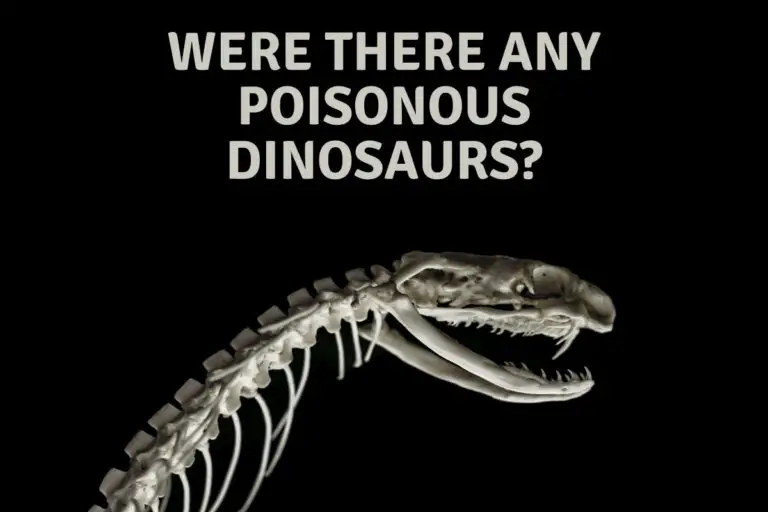How To Find Fossils on the Beach?
Beaches are a great place to go fossil hunting as long as you know what you are looking for and are aware of some safety tips before you go. Your fossil hunt with be much more successful if you research a little about the area you are going, and how to spot a fossil amongst all the rocks. While we can give you a few tips on great fossil hunting locations, we can give you a whole lot more ideas on how to find the fossils once you are there.
In the article below we have some tips and advice on how to spot fossils on a beach, the things you might need to take with you and some other locations where fossils might be.
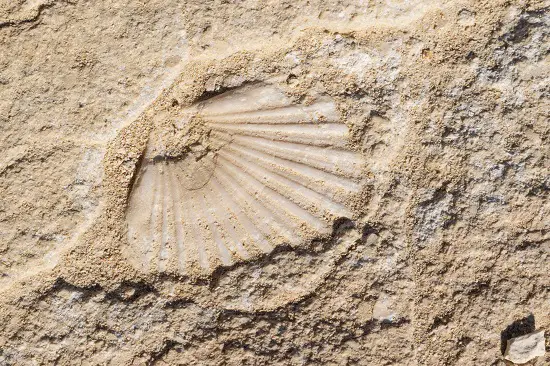
Where to Look on Beaches for Fossils?
Check out the Shingle on the Beach
Shingle are the small rocks that rather than be washed in from the sea, the rocks from the cliffs that fall or are washed loose from waves and left on the beach rather than washed past the tide line. This can be a great place to find fossils which may be heavier than other rocks and therefore still visible when the tide goes out.
In loose rocks and stones
Check out larger rocks and stones along the beach, and if not too large ( don’t hurt yourself) make sure to move them around. Fossils can be found in the underneath of rocks not just to the top facing you and many fossils are missed by people just using their eyes rather than their muscles!
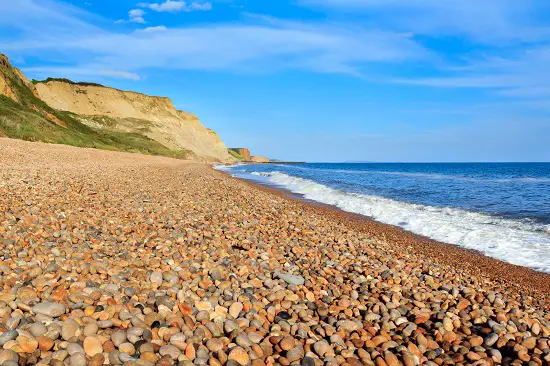
Imbedded in the Cliff Face
Cliffs are a window on the past and each layer, , look for different colored rock lines, shows a different age in Earth’s past. If you do a little research you will be able to find out the age of those lines and therefore have an idea of what are the common fossils you should look out for there.
A good time to go to the beach is after a high tide has gone out so you can see any areas that might have been washed away and if there is any fresh rock exposed you can explore and look for fossils in. .
However, cliffs can be dangerous at the bottom as well as the top, (where do you think all those rocks at the bottom came from) so wear a hard hat and look out for signs warning of falling or loose rocks before you try this.
Look at the rocks and pebbles on the tide line
The tide may change but there will always be a point where it hits high tide and starts to recede. This is a great place to look as rocks and fossils will have been moved up the beach to this spot and are stuck there until the next high tide. it also leaves them exposed and not buried as they might be further down by the movement of sand. this is a good way to find megalodon teeth as well.
Bottom of Scree Slopes
A scree slope is a sloped area with a lot of loose rocks. Although often on mountains they do form on cliffs and beaches that are angled rather than sheer faces and the advantage here is that fossils will often be gathered at the bottom of them rather than the top – so you won’t even have to climb very far!
How to Look for Fossils on the Beach
Plan your trip, you can take a look at our article on how to go fossil hunting here on the site as well for more detail, but the in a nutshell version is below.
Research the Area
Different areas are around the world are popular for different types of fossils, we have a section on this below. So do a little research before you go to the beach so you know if you are looking for a megalodon tooth of some trilobites, It gives you a head start.
A simple google search of the name of your beach and fossil will bring up ideas and location to start from, and while you are there if it is popular for fossil you might meet some fellow hunters to swap tips and advice with as well.
Stay safe and keep and eye on tides
Tides are often faster than you think so try to go when the tide is going out to give yourself plenty of time and plan an escape route off the beach to higher ground. It is easy to let time get away from you and the last thing you want is to be trapped on a rising tide at the foot of a cliff!
Similar as we mention above cliffs are not just dangerous at the top, rocks can fall from them and some protection even from small rocks is essential so take a hard hat. Tell someone where you are going and what time you plan to be back, and even better is to not go alone, if accidents happen you have each other to help.
Fossil Spotting: Look for Lines in Rocks
Shells, trilobites, and even bones will look different from the rocks they are imbedded in, though it may take awhile to learn how to spot these. You can practice before had if you already have any fossils, or by looking at pictures of fossils in their matrix ( the rock they are held in) by examining them.
Then remembering the curved or wavy lines of ammonite shells for example, of the thick ridges on the back of a trilobite. This will help when examining beach rocks and make fossils easier to spot.
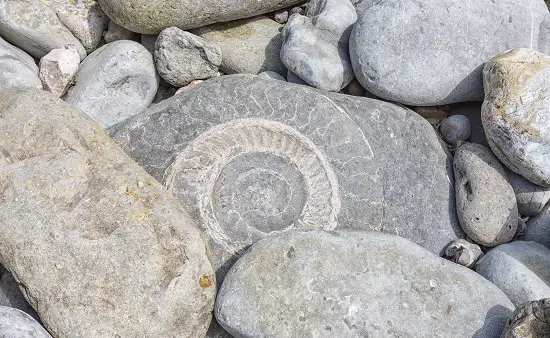
Look for Different Colors and Textures.
Although fossils may or may not be different colors from their surrounding rock, the lines in rocks and cliffs tell a story, if you know the age of those ( in a cliff for example) you can work out the fossils that should be found there.
Fossil hunting is not just an exercise for the eyes, a fossil in a rock may feel very different from its surroundings, you can rub your fingers over different rocks to see if there are any ridges or a difference in texture to help identify potential fossils. this is particularly useful on smooth sea worn rocks from the beach.
How to Tell a Rock From a Fossil.
Fossils will often feel different to the rock around them, there may be ridges or bumps or rough patches. Rub your fingers over the rock to see if you can feel any of these differences, if not then you are probably holding a rock! Even if it is shaped like a claw or a dinosaur tooth it is still probably a rock. However, if you are unsure you can check with a local fossil group to double check.
Easier to Spot Fossils if its Wet
If it is a dry day then carrying a spray to wet some rocks may make it easier to sport fossils, although of course you can hose down an entire cliff face, so just take a small spray bottle. Therefore if it is raining dont be put off fossil hunting, it may be that you will have a better chance if the ground and rocks are wet and It can be a welcome change from sunbathing on the beach!
Go on an organized fossil walk or hunt.
At the more famous fossil beaches around the world there is very likely to be a club or society who will organise fossil hunts or walks to help people identify areas to search, best locations to find fossils, and of course what fossils are in the area.
These are mostly cheap and run by local enthusiasts who are usually more than happy to share what they have learnt, and you can’t put a price on local knowledge!
Look up as well as down
Although the fossils you may be able to take are likely to be on the actual beach, do spend some time looking at cliff faces which are a slice of different times in Earth’s history. These may have whole sheets of fossils you can at least see if not take.
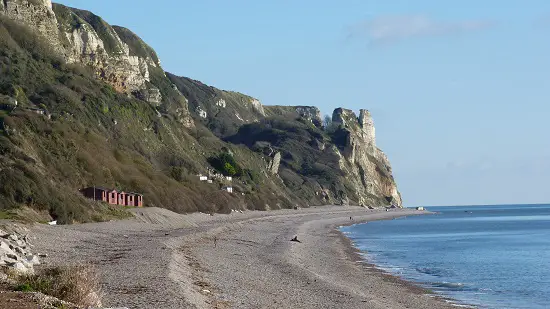
Give it a Lick!
While we dont advocate doing this, plenty of people do! Bones will often be porous with tiny little holes in them. which means when you place it on your tongue it will create a little suction and stick, rocks will not do this.
This does not mean as well as sight and touch you should use taste to identify fossils though! So dont go aroudn the beach lickling rocks! That will just make people stay away from you!
Types of Rocks can Make a Difference.
On beaches like the south coast of the UK (the jurassic Coast as its aptly named) there are limestone cliffs. There at least, the limestone is a lighter gray color. There are often scattered around the foot of cliffs and may contain ammonite fossils.
Limestone is a sedimentary rock, sandstone and shale are others like it. however sandstone is less likely to contain fossils as they break down easier.
however, before rushing out to break them all it is advised to look for evidence of the fossil on the outside before spending time trying to break it open. ( there are an awful lot of these rocks) Shale and mudstone will also have potential to have fossils inside them, and these may include squid like belemnites.
Practice makes perfect
As with all things, fossil hunting takes skills. the longer you do it the better you will get and the quicker and easier you will be able to identify fossils from rocks. So if you don’t succeed on your first trip to the beach, be patient and try again,
Maybe add to your research with a book or a organized walk before you head out on your own again, but the key is to keep trying. there is plenty to find and all you need is some patients, the right location and some time.
Buy fossils!
If all else fails you can of course by collections for a few dollars on amazon to give you a start and idea of what you are looking for. Links for this below.
Other Fossil Locations
While the beach is an excellent place to look for fossils if you live in the Middle of the U.S, or Alice Springs australia, its not very helpful advice. So below there is a list, and later an article, on other locations you may find fossils.
The important thing to remember is that Earth has looked very VERy different over the last 500 million years, and what is a beach now was not one all those years ago. Even if you live miles from todays coast, you could be living on top of what was the coast million of years ago.
- Quarries
- Reiver banks
- Streams
- Construction sites
- Your own land
- farms
- Inland cliff faces
- Hill faces
- dried up lakes
Can You Keep Fossils You Find?
This varies from State to state and country to country. however as a general rule of thumb ( and please check this out in your location) you can keep fossils you find on public land, almost always if they are invertebrates and sometimes if they are not. Some places have rules to keep the fossil in place so that experts can come to check if there are more.
Private land can be different and you will need the permission of the owner, but even then there are still regulations to follow. So we again suggest you check out your local laws regarding this if you do uncover the next t Rex fossil!
Conclusion
So depending where you are in the world there should be somewhere that has fossils or fossil hunting, this comes with some exceptions however, places like the middle east has very few fossil discoveries, along with small islands like the carribean and some of the pacific and South east Asian islands So while Dinosaurs certainly did live all over the world, their fossils are more abundant in some locations.
hopefully the tips and links above are of some use next time you find yourself on a rocky beach, especially on a rainy day, make the most of it and find yourself some fossil souvenirs to take home….. as long as they didn’t have a backbone! It is a real bucket list item!
References
- https://earthscience.stackexchange.com/questions/4940/how-can-i-learn-to-spot-fossils-and-fossil-bearing-rocks-on-the-jurassic-coast
- https://getoutside.ordnancesurvey.co.uk/guides/beginners-guide-to-fossil-hunting/
- https://ukfossils.co.uk/2016/01/25/where-to-find-fossils/
- https://www.discovery.com/science/Difference-Between-Rock-Fossil
Hi, I am Roy Ford a General Studies and English Teacher who has taught all over the world. What started as a fossil collection became a great way to teach, motivate and inspire students of all ages and all over the world about dinosaurs and from that and children’s love of dinosaurs came the site dinosaur facts for kids, a resource for all ages.





